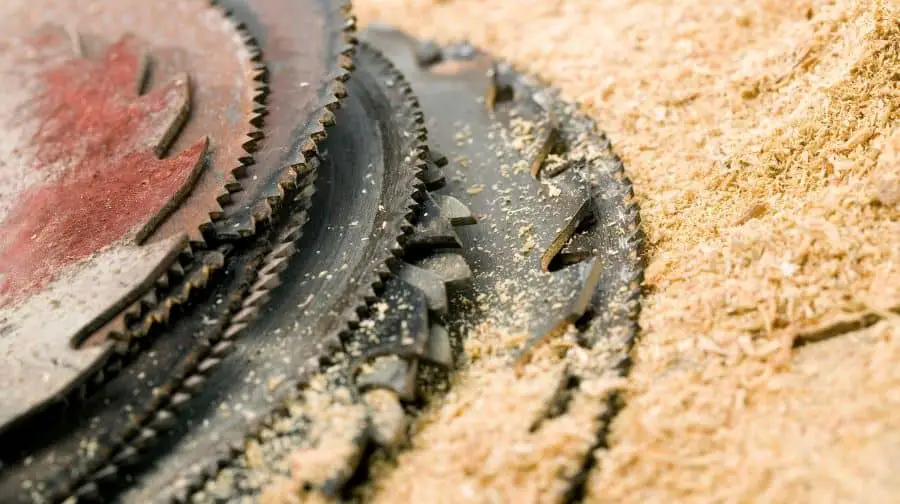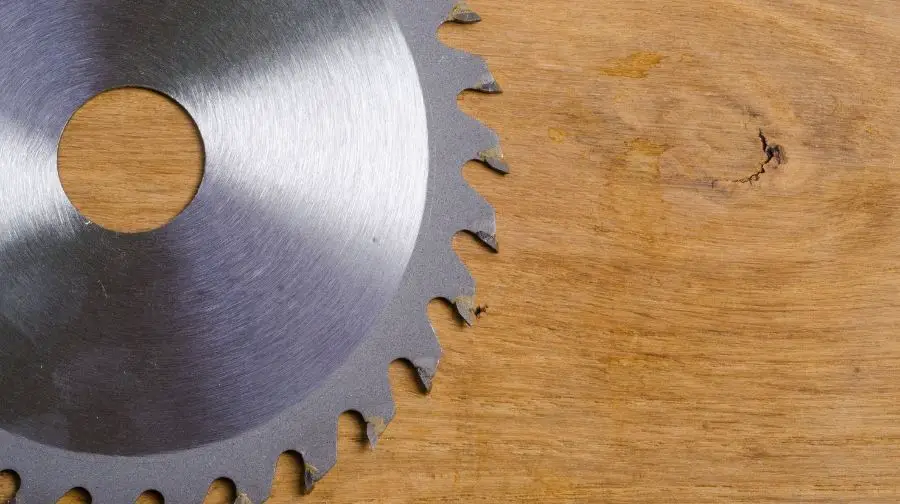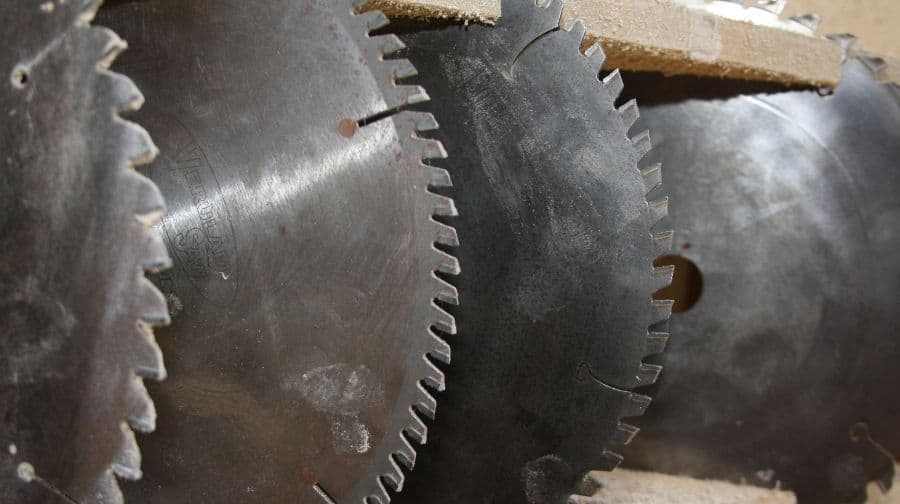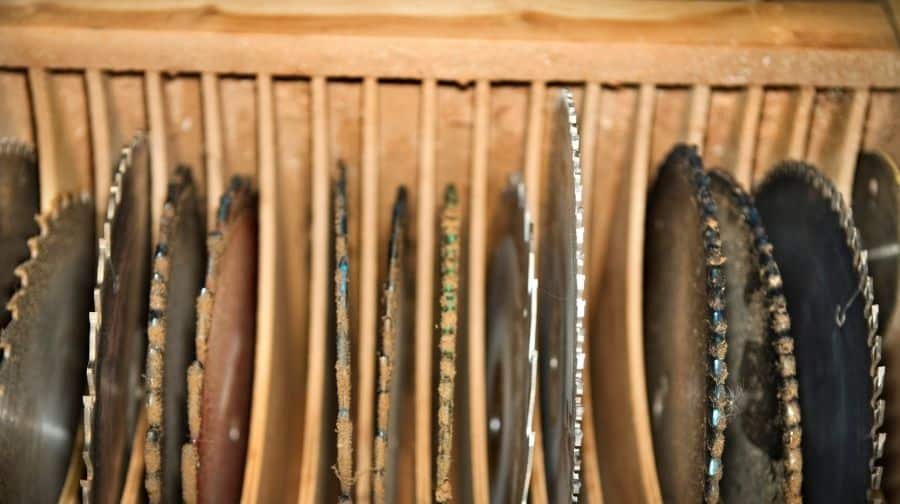
Among the several hand-held power tools available, such as angle grinders, the circular saw is among the most popular. It has various applications, and its blades seem particularly unusual in one respect: they do not become caught in the material.
Indeed, if there are any issues with the accuracy or smoothness of the cut, all that is required is to take it out of the material. They are powerful enough to cut brick, cement, and heavy metal.
Circular saw blades are renowned for their endurance and strength, so people frequently inquire about the hardening of circular saw blades.
While this varies according to the production method and the material used to manufacture the blades, it is a fact that most circular saws on the marketplace are hardened.
What Type of Steel Are Circular Saw Blades Made from?
It is mostly made of high carbon steel or even a combination of other steel, depending on the purpose of the blade. Before beginning the production process, it is critical to ascertain the hard steel employed to construct the blades.
You need to know that the production process for blades is extraordinarily complex and involves several processes, the last of which is hardening the steel immediately after it is cut. However, what exactly is hardening and how will it affect the performance of a circular saw blade?
The saw’s intended function determines the steel used for the fabrication process. To cut objects like trunks or concrete, the blade’s hardness must be just correct. While the blade’s flexibility is critical in life, the blade’s hardness determines whether the blade will cut through something.
To better understand everything, we must first identify the sorts of steel that may be used to create the blade and the process for creating a circular blade from the steel. The following is a list of steel types.
Discover 1,000 Hours Of Step-By-Step Woodworking Videos

It’s called Woodwork101. A database of detailed videos and blueprints in crystal clear, mouth-watering HD that will take you by the hand and show you that DIY home projects done the right way are easy, fun, and always of top quality… turning a dream into reality in a heartbeat. Getting you that perfect build each and every time.
Types of Steel Used For Circular Saw Blades:
Circular saw blades can be made from a variety of steel types. It is entirely dependent on the purpose and design of the blades.
- Tungsten carbide tipped saws are made of high carbon steel (1075Cr1).
- High carbon content and the inclusion of vanadium (80CrV2) are utilized to create blades that are robust, large, and resistant to cracking.
- Chrome Vanadium is a material that is used to make friction saw blades.
- Several steel kinds can be utilized to construct hot saws depending on the application and the material to be cut.
- Four hundred twenty different types of stainless steel are utilized to make food-cutting blades.
- For domestic use, 440B stainless steel is preferable.
- Dim05 HSS is being used in the manufacture of HSS saws.

Types Of Circular Saw Blades
- Rip-cut blades: These blades contain a small number of teeth, some as little as 16, while others have more than 40. The fewer teeth enable more aggressive cutting and bigger slices.
- Framing Blades: Framing blades are closely linked to rip-cut blades. Additionally, these blades feature a small number of teeth, often 24, and are designed to perform forceful and rapid cuts. Both rip-cut and frame blades are suitable for circumstances where speed and volume take precedence over accuracy.
- Blades for crosscutting. These blades feature a greater number of teeth. Quite frequently, these blades will have a tooth count of 60 to 80. The increased tooth count enables you to make more precise and clean cuts through wood.
- Plywood blades: These blades have the most teeth of any commercial saw blade. Often, the blades have more than 100 teeth. The objective of these blades is to get the finest cut feasible with the least amount of damage or tearing to the wood.
[Video] 3 Most Common Mistakes
When Setting Up Shop

A woodworking friend of mine shared this video by Ralph Chapman with me that helped him set up his workshop.
The video explains the benefits of Ralph Chapman’s guide about setting up an affordable workshop and avoiding the most common mistakes offers to anyone interested in woodworking.
Circular Saw Blades Have Significant Advantages
As previously stated, there are various advantages to utilizing a circular saw and its blades. These are often serrated metallic discs that are suitable for cutting through various materials such as wood, metal, or plexiglass.
What is the most notable benefit of these blades? They are entirely safe, and with proper safeguards, there is no chance of damage.
Additionally, you will not have any difficulties with the smoothness of the operation. Even if the blade becomes stuck, you can easily remove it and continue, which is the primary distinction between these saws and those found on angle grinders or even other power equipment.
Furthermore, if you are familiar with circular saws, you are aware that cutting straight and accurate requires practice. However, if you’ve mastered the art of using a circular saw with a high-quality saw blade, you’ll be able to cut through virtually anything, including strong steel.
How to Make Circular Saw Blades
A saw blade is manufactured using a variety of processes and procedures. It is a six-step process that converts steel sheets and rolls to circular blades. The following are the stages involved in transforming raw steel into a blade that everyone adores.
- Steel Cutting
When the steel is delivered to the factory or place of manufacture, it is in the shape of sheets or a roll. Cutting the steel sheets is the initial stage in fabricating the blades. To be sure, cutting steel is an art form in and of itself, as it cannot be cut with standard equipment. However, contemporary technology allows for the precise cutting of blades using a laser machine. The machine makes use of a high-intensity CO2 laser. The blades’ physical appearance must be specified in CAD, a computer-aided design application that the machine utilizes to cut the blades.
- Hardening
After cutting the blades to the desired form, the next step is to heat them to get them closer to becoming ready. The raw steel surface is unevenly distributed in terms of characteristics and appearance. A heat treatment procedure hardens and strengthens the steel, making it more resistant to force. The steel blades are heated to between 860- and 1100-degrees Celsius, based on the type of steel used to create the circular blade.
The procedure is comprised of four phases. In the first stage, you heat the steel to its maximum temperature, which varies according to the steel and desires blade shape. The second stage involves fast cooling the blade once it has become red hot. It is done to make the sufficiently difficult. The third stage is when you lower the blade’s hardness to extend its life. You will load the blades and gently heat them to between 350 and 560 degrees Celsius, depending mostly on the material. Step 4 entails gradually cooling the blades.
- Align The Blade
Straight blades are required to cut in such a straight line. This phase of the procedure ensures that the blades do not damage the material being cut. Modern technology enables blades to be straightened mechanically using machines such as the PSR 1,200. However, the conventional method involved hardening the material with a sledgehammer. When the steel was red hot, the hammer would be used to straighten the surface.
- Polish
Once the blade’s surface has been straightened, the polishing phase of the play begins. The blade’s surface is next polished and ground to ensure that the hardness is distributed uniformly over the blade’s surface. This phase was formerly handled manually but required a very skilled eye to judge. However, current technology has overcome the concerns.
- Finishing
Generally, this process is referred to as tipping, but we’re going to refer to it as the coating for the sake of clarity. As a metal, steel is susceptible to oxidation. To avoid surface oxidation, a computer is utilized to induce the tungsten carbide to the blade tips. It is carried out using a machine to ensure uniform induction. This step ensures that the induction occurs uniformly throughout the surface.
- Sharpening
After you’ve completed the preceding stages, the final step occurs before delivering the product. The blades must be sharp to chop things down and have a long life. The tips are automatically ground to a point sharp enough to clip a falling feather.
Are Circular Saw Blades Hardened Steel?
Yes, circular saw blades are hardened steel. This is accomplished by positioning the blade near a source of intense heat. The often-utilized temperature is between 900 and 1,100 degrees Celsius, which is ideal for hardening steel blades. Once the steel has been cut to the proper size and shape, it is essential to guarantee that it can withstand tremendous force and operate more powerfully.
As discussed previously, the initial step is to heat the steel blade to extremely high temperatures. After then, the blade is immediately cooled before being reheated to a temperature of 500 degrees Celsius. The procedure is completed by chilling the blade a second time, resulting in a durable and reliable steel blade.
The blades are straightened, polished, sharpened, and then coated following the hardening process. The High carbon steel, combined with a meticulous step by step production procedure that includes hardening, assures the blades’ superior quality and endurance. Although the blades must be firm to work efficiently.

Are Circular Saw Blades Good for Knife Making?
Yes, almost all antique saw blades are made from high carbon steel, which makes them very durable. If the blade is hard to keep its edge, no need to alter the steel in order to turn it into a usable knife. However, saw-cut blanks are occasionally overly flexible, and you can deal around (or with) this.
If you’re interested in repurposing outdated saw blades to create unique handmade knives, you may take on the job and perhaps add knife manufacturing to your list of do-it-yourself successes.
Rather than throwing away your old blades, you may turn this into a side project and perhaps sell these bespoke blades for cash, based on the finish perfection.
Curious about What To Do With Old Circular Saw Blades? Please consider reading our article about the topic by clicking here.
Are Circular Saw Blades High Carbon Steel?
Yes, circular saw blades are made out of High-carbon steel which is the least expensive and most flexible steel, which means it’s less prone to fracture if it binds, but it bends considerably more easily than other steels.
Do Circular Saw Blades with Carbide Tips Have Usable Steel?
Yes, you can reuse the bulk of the steel from circular saw blades with carbide tips. In most cases the interior of the blade will be reused and the excess steel will be scraped.
Carbide saw blades provide a variety of advantages that make cutting easier and more precise. Furthermore, these tools can help save time, labor, money, and other valuable resources. The only need to ensure is that you get your blade from a reputable supplier. There are several carbide cutting tools on the market, from where you can choose Circular saw blades with carbide tips.

Are Circular Saw Blades Spring Steel?
Spring steel is commonly referred to as the steel springs are made out of which can consist of different types of steel such as medium carbon steel, low-alloy manganese, or high carbon steel. Circular saw blades are made from high carbon steel so technically yes circular saw blades are made from spring steel.
There is a reason that blades have indeed been nearly entirely constructed of steel since smiths had the ability to semi-reliable make it.
Steel has never been exceeded as a material for blades, much more so for blades that are subjected to heavy wear, such as the bulk of those included in the question’s specifics.
Other materials that appear to be superior to steel suffer from one of two problems:
- Tough materials, such as different Titanium alloys, are extremely resistant to breaking under lateral stress and impact and are extremely durable. However, they are excessively pliable (flexible), and the edge is prone to distortion during usage.
- Abrasion and distortion are extremely resistant to hard materials such as carbides and ceramics. However, they are too fragile and prone to crack or fracture when subjected to external stress (side to side pressure on the edge).
The primary reason circular saw blades are just so efficient is that they are properly hardened and then sharpened, covered, and polished. As a result, a circular saw is a versatile tool that can be used for various tasks, including cutting through tough materials.
If you are familiar with hand-held power tools and love do-it-yourself projects, you can be certain that buying in a circular saw will simplify various chores. All that remains is choosing the appropriate saw for your forthcoming tasks and always operating carefully while operating saws.



